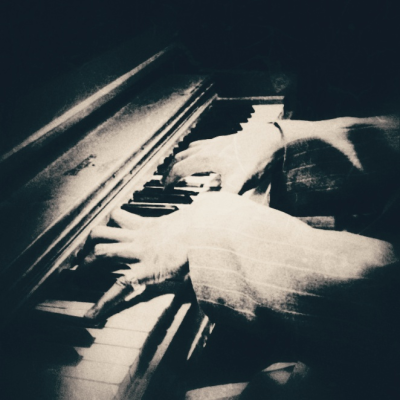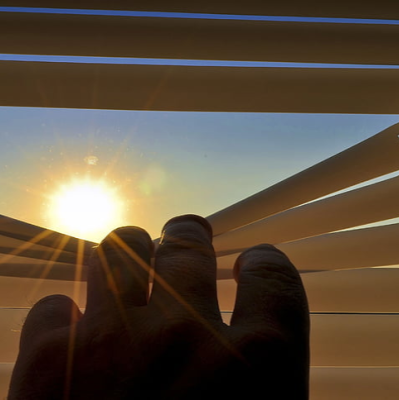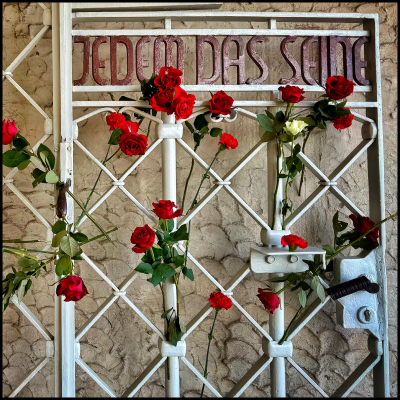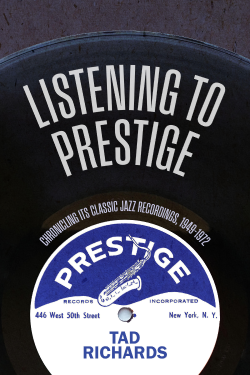.
.
For over twenty years, publishing quality jazz-themed fiction has been a mission of Jerry Jazz Musician. Hundreds of short stories have appeared on the pages of this website, most all of which can be accessed by clicking here.
A substantial number of novels and stories with jazz music as a component of the story have been published over the years, and the scholar David J. Rife has written short essay/reviews of them, which he has compiled in two valuable resources, Jazz Fiction: A History and Comprehensive Reader’s Guide (2008), and a recently published sequel, Jazz Fiction: Take Two. (Several of the stories published on Jerry Jazz Musician are reviewed).
Rife’s work is impressive and worth sharing with Jerry Jazz Musician readers. With his cooperation, essay/review excerpts from Take Two will be published on a regular basis.
.
In this edition, Rife writes about jazz novels and short stories that feature a theme of “mystery.”
.
.
___
.
.
.
…..Jazz Fiction: Take Two is the sequel to Jazz Fiction: A History and Comprehensive Reader’s Guide (2008). The earlier work filled a pressing need in jazz studies by identifying and discussing 700 works of fiction with a jazz component.
…..This work picks up where that one left off, around the turn of the 21st century, and surveys over 500 works of jazz-inflected fiction that have appeared since. None of these works, to my knowledge, have been discussed in this context.
…..The essay-reviews at the center of the book are designed to give readers a sense of the plots of the works in question and to characterize their debt to jazz. The entries were written with both the general reader and the scholar in mind and are intended to entertain as well as inform. This alone should qualify Jazz Fiction: Take Two as an unusual and useful reference resource.
.
-David J. Rife
.
.
___
.
.
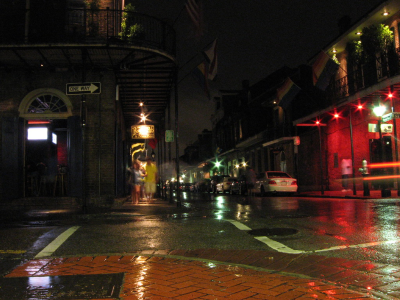
Intersection of Bourbon and St. Ann, New Orleans, Louisiana
.
___
.
.
Mystery, Mayhem, Music
…..If everyone loves a mystery, as the saying goes, jazz fiction enthusiast jonesing for a little murder—or at least a little mystery—in their reading matter are in for a treat: with its abundance of late nights, seedy nightclubs, booze, drugs, and sex, jazz provides a congenial environment for thrillers. As luck would have it, several series in the literature of this broad subgenre eagerly waiting to provide countless hours of entertainment. Here are three such series to get you started.
…..John Harvey’s police procedurals feature Charlie Resnick, a Nottingham cop who listens to bebop for emotional comfort after a depressing day’s work. Joan Merrill’s Casey McKie is also a pro: she’s a San Francisco P. I. whose relationship with legendary jazz singer Dee Jefferson involves her in solving felonious issues related to jazz. Bill Moody’s Evan Horne, on the other hand, is a professional jazz pianist in southern California who becomes an amateur sleuth after an injury that prevents him from performing.
…..I identify many other jazz-inflected works in my book Jazz Fiction: Take Two . The following list provides an excellent starting point for readers interested in the subject. You will be pleasantly surprised by their variety. [Note: John Harvey’s novels and five of Bill Moody’s aren’t discussed in this book because they were published before 2005; you can find discussions of these works in my earlier study Jazz Fiction (2008).]
.
.
___
.
..
…
…..A long, funny, convoluted thriller that holds much interest for the fan of jazz literature. The hero is a London audiophile, a connoisseur of vinyl recordings who scratches out a living by scouring thrift stores, flea markets, and used record shops in search of overlooked treasures. When he discovers a batch, he adds the best to his own extensive jazz collection and puts the rest on eBay. He works just hard enough to feed himself and his twin cats. His business card reads “The Vinyl Detective,” a designation written on whim or whiskey.
…..The plot proper begins when a strikingly attractive young woman offers him a bundle of money to locate one of the rarest vinyl jazz recordings ever made, Easy Geary’s lost masterpiece Easy Come Easy Go (1955). Although the never-named protagonist hasn’t done any actual detecting, he accepts the assignment and sets out, in the company of the fetching Nevada Warren, to find the priceless object. Very soon they discover they’re being followed and properly deduce that someone else—the “psychotic Aryan twins” in this case—are on the same quest. Enough twists and turns follow to provide sufficient adventure for a Bond-Bourne collaboration.
…..Through it all—from London, to Japan, to Los Angeles, and back to London—we are provided with substantial shards of jazz history, mostly from the 50s, and a good deal of tech talk concerning among other matters the production and transmission of vinyl recording, as well as considerable reference to the crookedness of the music industry. The abstruse matters are typically rendered in graceful, easily understood language (though some flew right by me: Ortofam Rohmann cartridges, Roksam Xerxes turntables, waveform analyses, etc.). Another thing that made me wonder is how a geeknerd, who seems to be fiftyish, could be irresistible to two of the most delectable babes on the planet. On the other hand, we have to wait only around 400 pages to find out why the record was so desperately in demand in the first place. Many readers will be happy for the wait.
.
_____
.
.
…..
…..This is Volume 1 of a projected tetralogy, The City Blues Quartet, which depicts the intertwined histories of jazz and the Mob during four decades in the middle 50 years of the twentieth century. The other novels in the series that have appeared so far are Dead Man’s Blues and The Mobster’s Lament.
…..Based on actual events, Axeman is a deeply researched historical crime novel set in the sloshy wet summer of 1919 in New Orleans. Within a year a serial killer has axed to death a dozen citizens from the area, and since most of them were Italian some suspected a mafia connection. The community’s fear is exacerbated when a local newspaper publishes a letter it had received from the killer. In it, he specifies the time and date of his next grisly performance, saying however that he will spare the occupants of any place where jazz is playing at the time. The Axeman loved the music that had taken root in the city. With different agendas, three characters set out to discover the identity of the monster in their midst: a police detective, his former partner who has just been released from prison, and an 18-year-old, pale-skinned Creole, Ida Davis, who is addicted to Sherlock Holmes stories. Interestingly, each of these individuals pursues their goal from a different perspective, reminding us of the elusiveness of objectivity. Their investigations take place in a strikingly multi-racial community overridden by crooked cops and corrupt politicians, barbarity, crime, and prostitution. One important plot point involves the “fixing” of city hall to allow a mob boss to move the “pleasure district” to other parts of the community. Unsurprisingly, they encounter danger, violence, and personal injury at every turn.
…..Jazz provides the soundtrack for the book. Noteworthy venues and musicians are referred to, as is the unfortunate situation of Black musicians: they write and play the music that whites steal and profit from. Some of the musicians began to cover the keys of their horns to keep whites from stealing their techniques. But Baby Dodds looks to the Axeman’s announcement as cause for celebration: it means that his group and the dozens of other jazzers in the city will gig for the inflated rate of $25 on that occasion. Louis (Lewis in this novel, to avoid the insulting French pronunciation of “Louis”) Armstrong plays a large role in the narrative. He helps his friend Ida as she puts herself in jeopardy in pursuit of the Axeman. We also learn about his background including his relationship with jazz. When he’s offered a stable job with competitive pay, he balks because he can’t read music. Till now, he’s always been able to fake it. In jazz jargon, he has big ears. Here he is, in performance, no faking required:
…..“They were a couple minutes into ‘Tiger Rag’ when Lewis heard a cue from Baby as they came to the end of a chorus, a half-bar drum fill, a double hit on the snare. He closed his eyes and launched into a solo, but not one of his usual solos because none of those felt quite right. Tonight he made it up as he went along, feeding off the crowd and their frenzy. His mind drifted as he played, away from the music, and he thought about a day when he was by the river, about the blues he heard the wild man play on his old dented Kress horn. Lewis had never been able to capture that sound; it was always just at the back of his mind. But now he managed to remember it clearly and used it in his solo, picking out tunes he would never normally pick, letting his memory guide him in his choice of notes.”
…..Although dozens of non-fiction and pop culture treatments of the New Orleans axeman killer have appeared, three in particular (in addition to the book under discussion) stand out for their inclusion of jazz:
Julie Smith, The Axeman’s Jazz (1981)
Poppy Z. Brite, “Mussolini and the Axeman’s Jazz” (in Dark Destiny, ed. Edward E. Kramer, 1997)
Nathaniel Rich, King Zero (2018)
.
.
_____
.
.
..…..Another in the ongoing series featuring private eye Casey McKie. The case involves a legendary jazz singer, Georgia Valentine, whose death half a century earlier had been ruled suicide. But a long-lost letter from the great singer surfaces, calling into question the circumstances of her death: Did she kill herself by overdosing—or might she actually have been murdered? Casey moves her base of operations from San Francisco to New York where she tenaciously tracks down every clue she can garner in an effort to get to the bottom of a very old cold case. Casey’s primary motivation is to rescue the reputation of a Black female artist who had achieved fame against extravagant odds and then sacrificed everything she had won to drugs. As in the other novels in this series, jazz is ubiquitous (albeit often in the background) as Casey visits—from Greenwich Village to Harlem—the few remaining jazz venues from the old days, interacts with jazz writers and editors, and combs the archives for leads with the help of a true jazz geek. Many readers will be interested, but probably not surprised, by the attention given to the plight of the Black musicians in the decade or so following WW2..
.
_____
.
.
…..In this novel, jazz pianist Evan Horne’s seventh appearance in Bill Moody’s ongoing amateur detective series, Horne has left his nicely settled home in San Francisco for a brief gig in Los Angeles where he is offered a very plummy position to teach an A-list (just after Cruise, Clooney, Pitt, et. al.) movie star, Ryan Stiles, to impersonate a jazz pianist for a proposed indie. After agreeing to do so, Horne finds himself in a dreamland of beautiful people, sumptuous digs, fine dining, and big bucks. But things change drastically when a member of the despised paparazzi with whom Stiles had a contentious relationship dies on his way home after a confrontation with Stiles. Was it an accident—or could Stiles somehow be involved? Horne wants out of his contract at this point but agrees to stay on when he’s offered the opportunity to score the film as well as coach its star. Soon another related death occurs and, in an unrelated plot strand, the serial killer who still haunts Horne’s dreams escapes prison, pressing Horne back into action as an amateur sleuth. The jazz dimension of the story is organic, considerable, and carries the heft of authenticity. As in the other novels in the series, there are references to famous musicians like Red Garland, Phil Markowitz, and Bill Evans; scenes of jazz in performance; and substantial depiction of the process of digitizing music for the making of movies. What more could a jazz-fiction buff with a penchant for mysteries want? A tighter plot? Don’t be greedy..
.
.
_____
.
.
…..A lighthearted thriller featuring legendary bail bondsman Duke Kasmajiian and his motley crew of bounty hunters who employ a rather waggish modus operandi to track down a once-famous surfer-turned-dope addict who jumped bail owing Duke many thousands of dollars. Duke is 65 (hence the title), loves to suck on good cigars (he’s got a weak ticker), and displays a connoisseur’s flair for scotch. He’s also a good guy: he knows that California is soon to abolish his trade and so wants to be able to provide his numerous employees with substantial severance pay. He also curates one of the finest and most extensive collections of Pacific Coast jazz in the world—exclusively vinyl, of course. At one point he recites the names of 20 or so of his favorite West Coast artists. On another occasion he uses the music not just to show off his knowledge but to make a larger point, one that illuminates how he goes about solving the mystery at hand. When he hears the Jack Montrose Sextet playing, he not only identifies the title, the names of the players and their instruments, but goes on to explain that sidemen deserve the respect to be remembered by name; furthermore, “goddamn it!”, details are intrinsically valuable. This surfer-country novella bears him out..
.
.
_____
.
.
Click here to read previous editions of excerpts from David J. Rife’s Jazz Fiction: Take Two
.
.
Click here to read “Not From Around Here,” Jeff Dingler’s winning story in the 66th Jerry Jazz Musician Short Fiction Contest
Click here to read more short fiction published on Jerry Jazz Musician
Click here to read The Sunday Poem
Click here for information about how to submit your poetry or short fiction
Click here for details about the upcoming 67th Jerry Jazz Musician Short Fiction Contest
Click here to subscribe to the Jerry Jazz Musician quarterly newsletter (it’s free)
.
Click here to help support the continuing publication of Jerry Jazz Musician, and to keep it ad and commercial-free (thank you!)
.
.
___
.
.
Jerry Jazz Musician…human produced (and AI-free) since 1999
.
.
.








